|
How a synchromesh works on a modern gearbox.
This article describes the mysterious
thing called the synchromesh, i'm sure many of you have heard of it and know
what it does but i'm guessing as i used to, understanding how they work is
not so easy. This example is using a 5th gear from an Toyota E-51
transmission from the Supercharged MR2.
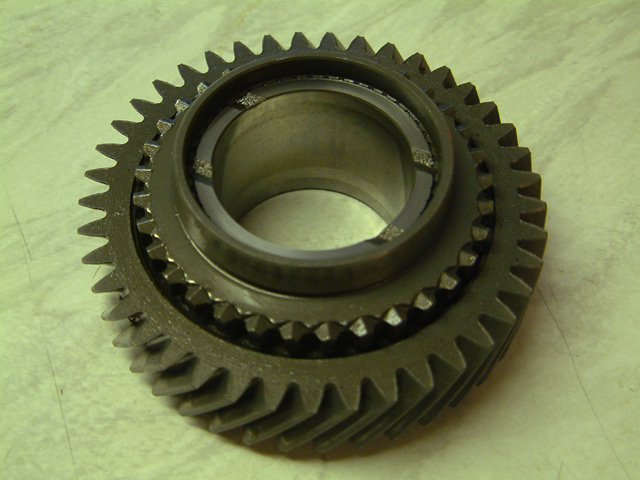
The 5 drive gear itself, this is normally located on the input shaft of the
gearbox, the 5th driven gear would be engaged on the larger outer cogs, the
drive gear is not locked to the input shaft in this box and idles on a set
of needle roller bearings. So if another gear is selected this will spin at
a different rate to the input shaft. The smaller teeth on the inner part engage
with the clutch sleeve when the gear is in use.
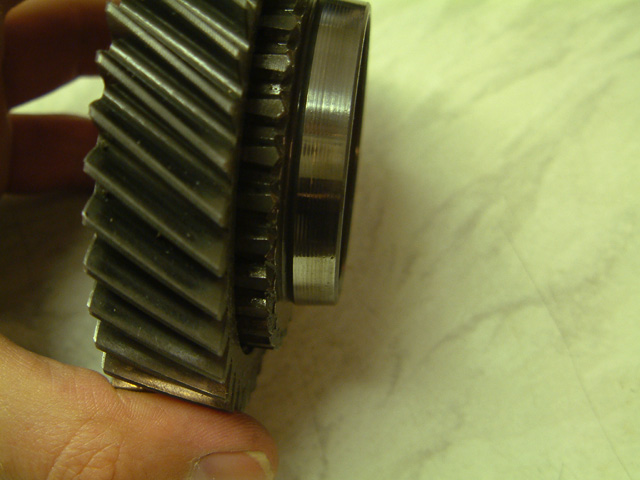
This shows the taper of the surface that mates with the inside of the
synchroniser ring.
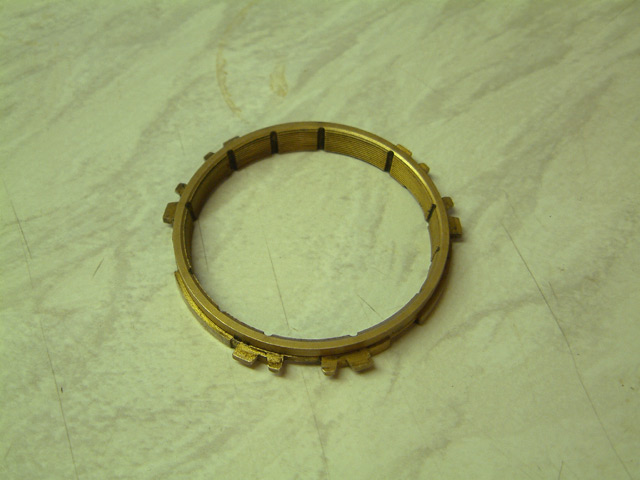
This is the brass synchroniser ring itself, it's tapered on the inner side.
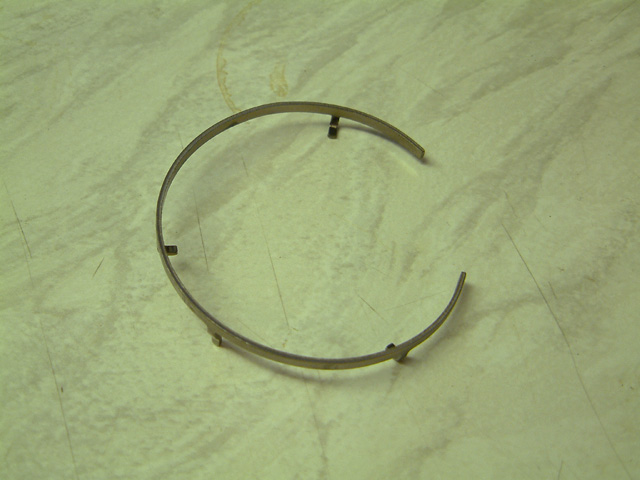
The synchroniser spring.
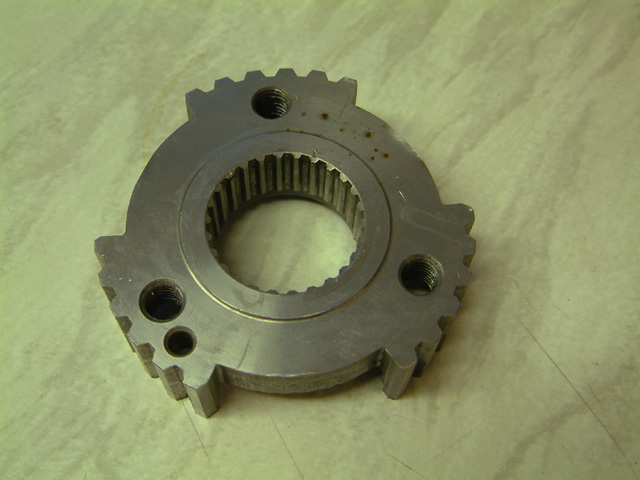
This is the 5th gear clutch hub, it is permanently attached to the input
shaft of the gearbox by the splines you can see in the inner side.
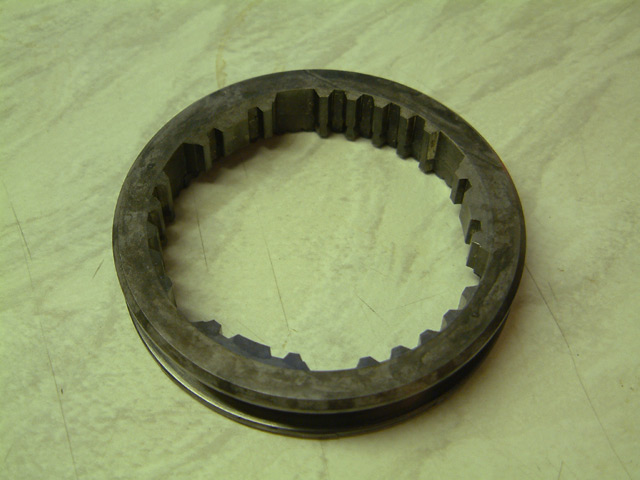
This is the clutch sleeve, it's this ring that actually engages the gear,
the inner teeth mesh with the smaller teeth that you can see on the 5th gear
and lock the clutch hub with the gear. There is a groove on the outer part,
the shift fork uses this to move the sleeve to engage or disengage the gear.
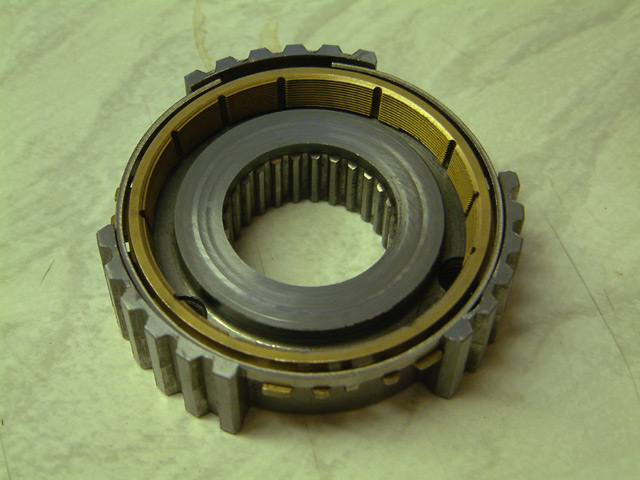
Here we have the synchroniser ring and spring installed into the clutch hub
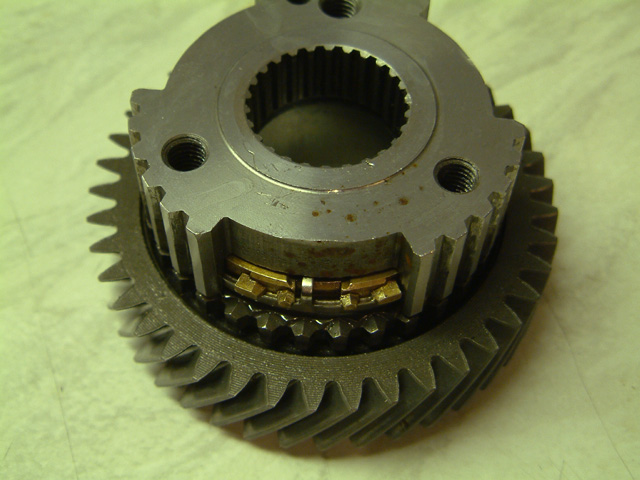
Here we have the 5th gear with the synchroniser, spring and hub installed
together.
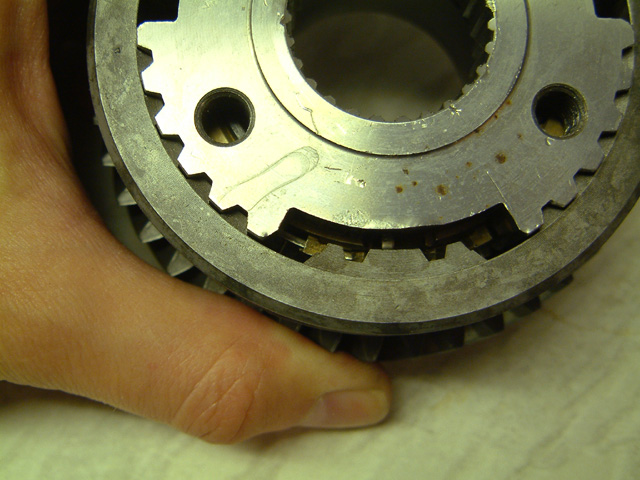
Lastly everything installed together
Ok, so how does all this stuff work? It's
actually quite simple. As we have a 5th gear here we'll use a 4th to 5th
gear shift. To engage the gear the teeth on the gear and the clutch hub need
to be spinning at the same speed and for the teeth to be in sync for the
sleeve to slip over and lock everything together.
When your in 4th the 5th gear will be
spinning at a different rate to the input shaft and the clutch hub, when you
go to change gear you disconnect the engine from the gearbox by using the
clutch and shifting into neutral, this means the input shaft is completely
free moving. What has to happen now is the speed of he input shaft must
match the speed of the 5th gear. The 5th gear is connected to the output
shaft by the 5th driven gear so if the car is in motion it will all be
spinning. When you go to shift the shift fork will push the sleeve towards
5th gear, this pushes against the synchroniser ring, because the
synchroniser ring and it's mating surface on the 5th gear itself are tapered
the synchroniser ring will grip the gear this will in turn speed up or slow
down the input shaft to the same speed as the 5th gear. Because the tips of
the cogs on the 5th gear, synchroniser ring and the sleeve are shaped like a
V they slip past each other, this aligns the sleeve with the gear and the
sleeve will lock over the 5th gear.
The following video clips demonstrate
this:
Clip 1
shows the gear locking together with the teeth of the sleeve and gear
aligned.
Clip 2 same as clip 1 but with the
teeth mis-aligned.
|